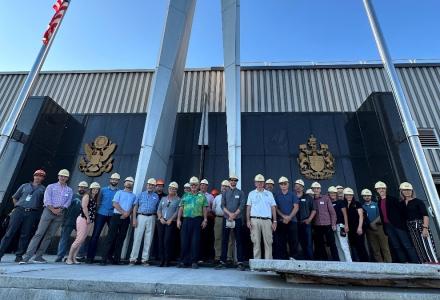
More than a year ago, in February 2014, the IJC released “A Balanced Diet for Lake Erie: Reducing Phosphorus Loadings and Harmful Algal Blooms.” It’s come to be known as the “LEEP” report, as part of the IJC’s “Lake Erie Ecosystem Priority.”
The report was in response to concerns over the threat of harmful algal blooms to the Lake Erie region, from its ecosystem health to its drinking water supplies. Lake Erie experienced the largest harmful algal bloom in recorded history in 2011.
The 2014 LEEP report recommended that Canadian and U.S. leaders take several steps to combat the “green menace,” including setting phosphorus reduction targets of 37-41 percent for the western Lake Erie basin.

Which brings us to August 2014, when two events made it even more clear that action was needed.
First, the Toledo, Ohio, area water supply was hit by a harmful algal bloom, forcing hundreds of thousands of people to stop drinking tap water for two days. Some people, it’s been reported, continue to opt for bottled water even though the “Toledo Water Crisis” has since passed. The second incident affected Pelee Island, a smaller Canadian community that was hit with a similar “don’t drink the water” warning.
At the start of all this talk about LEEP and the need to cut phosphorus loadings to Erie, there was debate. Some thought too much emphasis was being put on agriculture’s contribution to the problem. But as some speakers put it during public meetings held by the IJC in November 2014, this is everybody’s problem, and everyone is contributing in one way or another.
Now, it seems there’s general agreement that steps need to be taken to avoid another water crisis, while also acknowledging that future “don’t drink the water” warnings are surely possible.
In short, this is a problem that will take time to solve. But the solution is coming together in various forms. Exactly how we get there has yet to be decided, but that’s the next challenge coming down the river … or the lake.
In recent months, a number of developments have occurred, including:
- Mayors of the Great Lakes and St. Lawrence Cities Initiative --- a coalition of 114 cities --- called on the governors of Ohio, Michigan and Indiana, and the premier of Ontario, to commit to at least a 40 percent reduction in nutrient loadings to Lake Erie from agriculture, cities, and industry.
- A new binational agreement, signed June 13, 2015, between the governors of Ohio and Michigan and the premier of Ontario sets a goal of cutting phosphorus pollution flowing into western Lake Erie by 40 percent by 2025. The interim goal is 20 percent by 2020.
This new pact builds on the goals of the Great Lakes Water Quality Agreement between Canada and the United States, which in Annex 4 commits Environment Canada and the U.S. Environmental Protection Agency to develop objectives for Lake Erie phosphorus concentrations and loading targets by February 2016. The two agencies have released draft phosphorus reduction targets of 40 percent.
In other words, the pieces of the puzzle are coming together. You might say we have all the corner pieces in place. Now it’s just a matter of working to fill in the rest, and create a clear, blue picture of a healthy Lake Erie.






